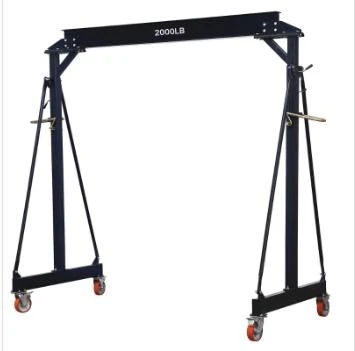Innovative Yard Gantry Solutions for Efficient Material Handling and Transportation
Understanding Yard Gantry Cranes Efficient Solutions for Modern Warehousing
In the realm of modern logistics and warehouse management, the yard gantry crane has emerged as a pivotal piece of equipment. These specialized cranes play a significant role in the handling of containers and heavy materials, enhancing operational efficiency and optimizing space utilization in large storage areas.
What is a Yard Gantry Crane?
A yard gantry crane is a type of crane characterized by its overhead framework that spans between two or more legs, which may be fixed or movable. These cranes are commonly found in shipping yards, rail yards, and large warehouses where the movement of heavy loads from trucks or trains to storage locations is necessary. Unlike standard cranes that operate on a fixed position, yard gantry cranes can traverse large areas, making them extremely versatile.
Key Features and Components
Yard gantry cranes are equipped with several key components
1. Gantry Structure The main supporting structure, typically made of steel, provides the necessary strength and stability to lift substantial weights.
2. Hoisting Mechanism This component allows for the lifting and lowering of loads. It can be powered by electrical or hydraulic systems, ensuring smooth operation.
3. Travel Mechanism This feature enables the crane to move along its designated track. Depending on the design, movement can be automated or manually controlled.
4. Control System Modern yard gantry cranes come equipped with sophisticated control systems that allow operators to maneuver loads with precision. These systems can include remote controls and programmable settings for increased efficiency and safety.
Advantages of Yard Gantry Cranes
The adoption of yard gantry cranes offers numerous advantages for organizations involved in logistics and material handling
1. Space Efficiency Yard gantry cranes utilize vertical space effectively, allowing for stacking of containers and materials without occupying additional floor space.
yard gantry

2. Flexible Movement Their mobility enables quick repositioning across a yard or warehouse, facilitating rapid loading and unloading processes.
3. Increased Productivity By automating parts of the lifting process and allowing for simultaneous handling of multiple containers, yard gantry cranes significantly boost operational productivity.
4. Safety Enhancements Modern features, such as load monitoring systems and emergency stop functions, ensure safer operations, reducing the risk of accidents in busy working environments.
5. Cost-Effectiveness Although the initial investment can be significant, the long-term savings from increased efficiency and reduced labor costs often justify the expense.
Applications in Various Industries
Yard gantry cranes are particularly prevalent in industries that require the handling of heavy loads. They are commonly used in
- Ports and Shipping Yards Efficiently loading and unloading containers from ships to storage, or vice versa.
- Rail Yards Transferring cargo between trains and storage areas.
- Construction Sites Moving materials around large sites, especially in urban environments where space is limited.
- Manufacturing Facilities Assisting in the movement of heavy machinery and raw materials within a plant.
Future Trends
As technology continues to advance, yard gantry cranes are evolving. The integration of automation and artificial intelligence is leading to smarter operation systems that require less human intervention, thus reducing labor costs and increasing safety. Additionally, the development of cranes with enhanced energy efficiency and sustainability features is becoming increasingly important as industries strive to minimize their environmental impact.
In conclusion, yard gantry cranes are indispensable assets in the modern world of logistics and material handling. Their ability to improve efficiency, enhance safety, and provide flexibility in operations makes them a cornerstone in warehouses and shipping yards globally. As innovations continue to emerge, these cranes will certainly adapt to meet the growing demands of the industry, solidifying their role in the future of material handling.
-
Versatile Lifting Solutions with Gantry and Overhead CranesNewsAug.29,2025
-
The Versatile Mobile Gantry Crane SolutionNewsAug.29,2025
-
Reliable Movement with Heavy Machinery Skates and RollersNewsAug.29,2025
-
Reliable Lifting Performance with 2000 lb Gantry Crane and 2 Ton Overhead SystemsNewsAug.29,2025
-
Maximize Lifting Efficiency with PML Magnetic LiftersNewsAug.29,2025
-
Efficient Relocation Starts with Reliable Machinery MoversNewsAug.29,2025
-
Efficient and Safe Lifting with Permanent Magnetic LiftersNewsAug.29,2025
